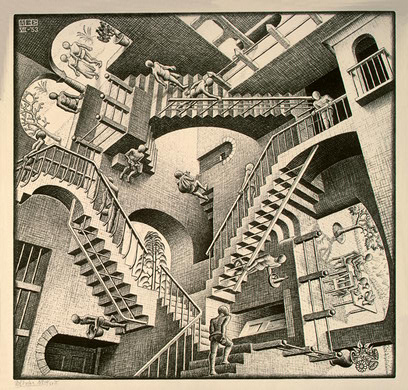



Special Relativity was conceived by Albert Einstein as a theory of space and time in which physical laws (including electromagnetism) have the same form for any inertial observer. Einstein's relativity principle generalizes Galilei's one and entails the departure from the very idea of an Ďabsolute' time as well as from that of an Ďabsolute' space. Not only velocity, but also length and time intervals (including zero-time intervals, i.e. the simultaneity of two events) become frame-dependent notions.
In order to ensure the equivalence of any two inertial frames when elecromagnetic phenomena are considered, the transformation rules connecting their space-time coordinates have to be modified with respect to the Galilean principle of velocity composition. This modification requires in turn a reformulation of Newtonian mechanics. If one wishes:
• To preserve energy and momentum conservation principles analogous to those of Newtonian physics, governing the dynamics of elastic and inelastic collisions between particles
• To recover Newtonian dynamics in the limit v<<c, where the classical theory has proved empirically adequate
then the pre-relativistic mass appearing in Newton's equations has to be replaced by a velocity-dependent quantity, namely that defined in eq. (2).
If we consider the limit of ordinary velocity (v<<c), eq. (2) reduces to the following:
![]()
The second term of this expression is just the classical kinetic energy divided by c². Therefore, mass changes with velocity as kinetic energy does. This observation, together with other general considerations concerning relativistic dynamics, leads to the following equation, stating the equivalence of mass and energy:
This equation reduces to eq. (2) if negative energy solutions are discarded.
Equation (4) establishes the conservation law to which the processes of creation and annihilation of particles must obey. A formal account of these processes is provided by quantum field theory. Quantum field theory generalizes quantum mechanics to the relativistic regime (v ~ c), in which the number of particles that can be found in a given portion of space becomes itself an observable . Like any other quantum observable, the particle number can, in most cases, be predicted only statistically. Furthermore, its determination is incompatible with the attribution of a precise value to other physical observables. More generally, the very possibility of interpreting a physical situation as if there were a well-defined number of particles depends on the experimental context, as is the case for any physical properties in ordinary quantum mechanics (see the section on uncertainty).
Anti-particles are connected to the formal existence of negative energy solutions of equation (4). In general, the solutions of relativistic equations representing particle motion propagate in a four-dimensional formal structure called Minkowski space-time. Whithin such a stucture, equation (4) only allows for negative energy solutions running backward in time (whereas the positive energy solutions run forward). From the viewpoint of an observer running forward in time, however, an electron associated with negative energy and moving backward in time appears to be acting like a positive energy electron traveling forward in time except for the fact that it reacts to electromagnetic field as if its electric charge were positive .
